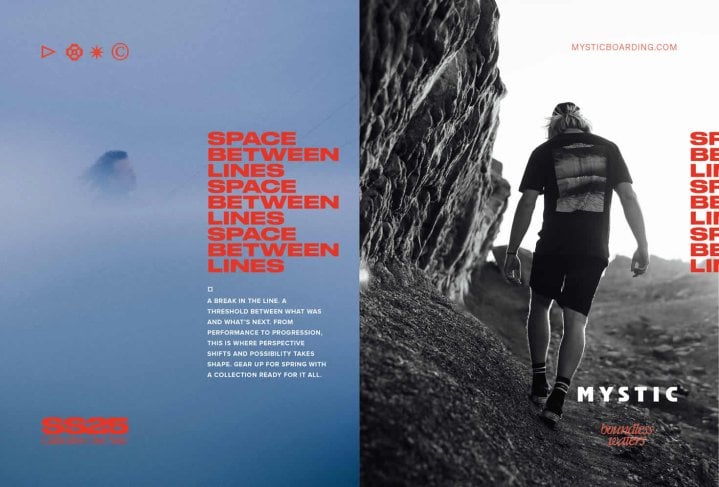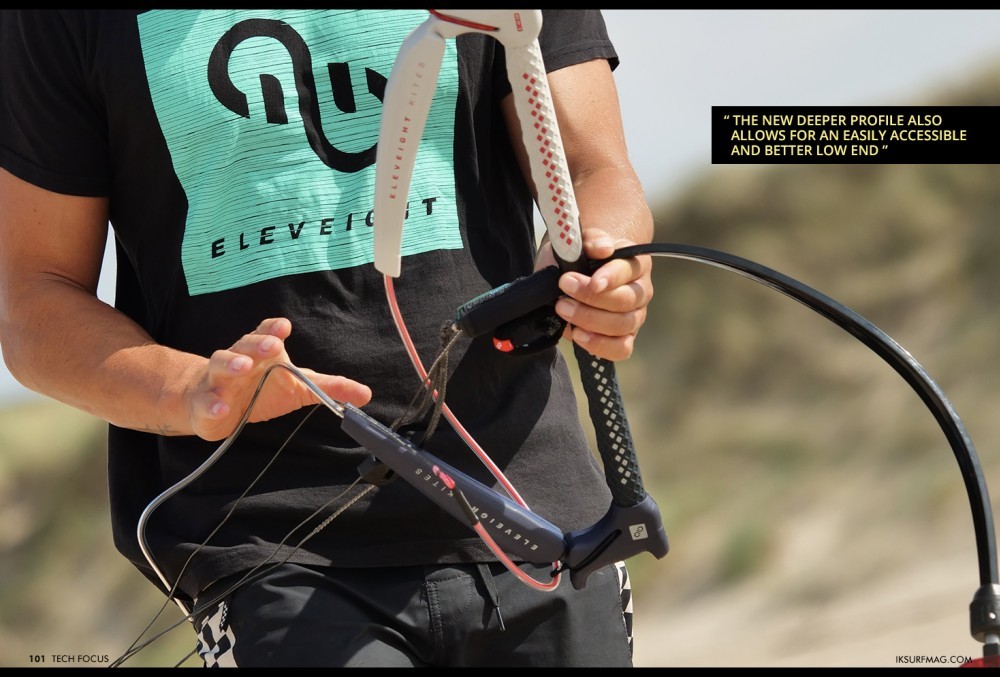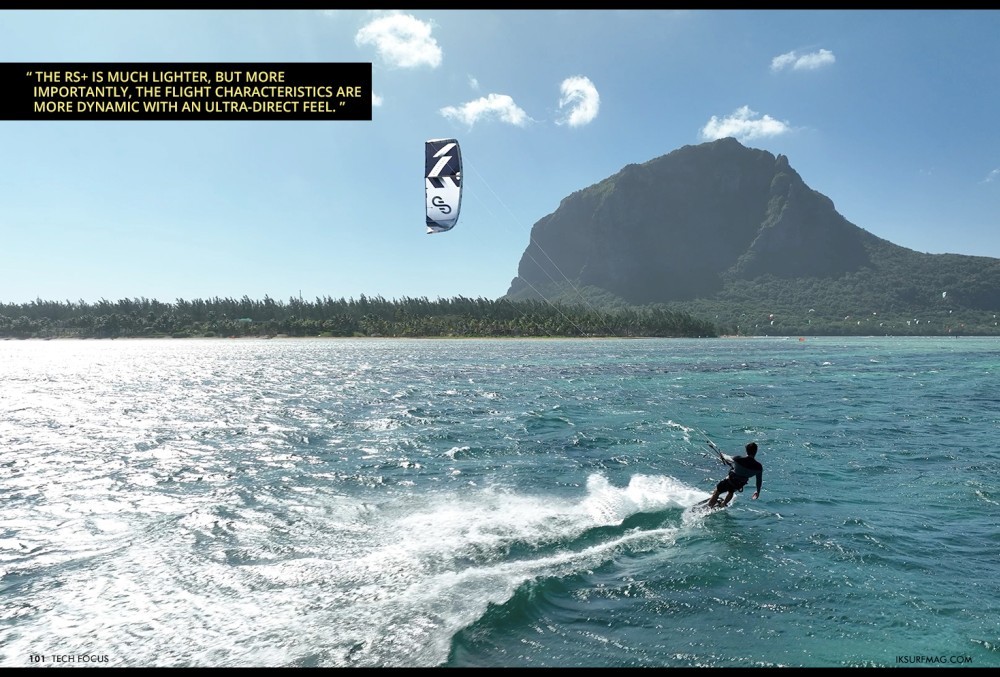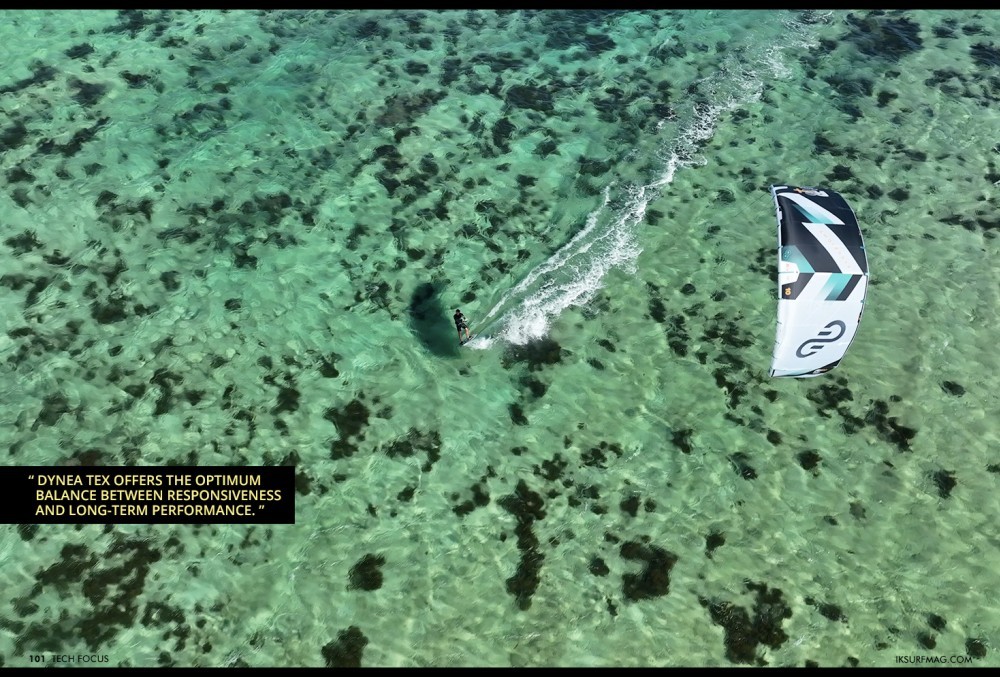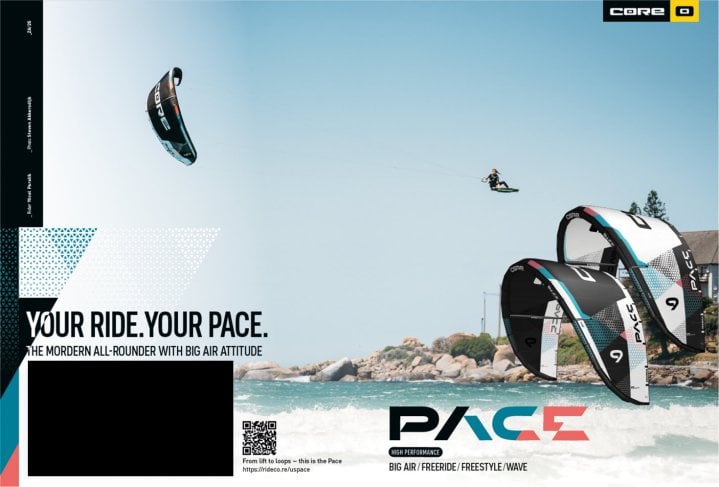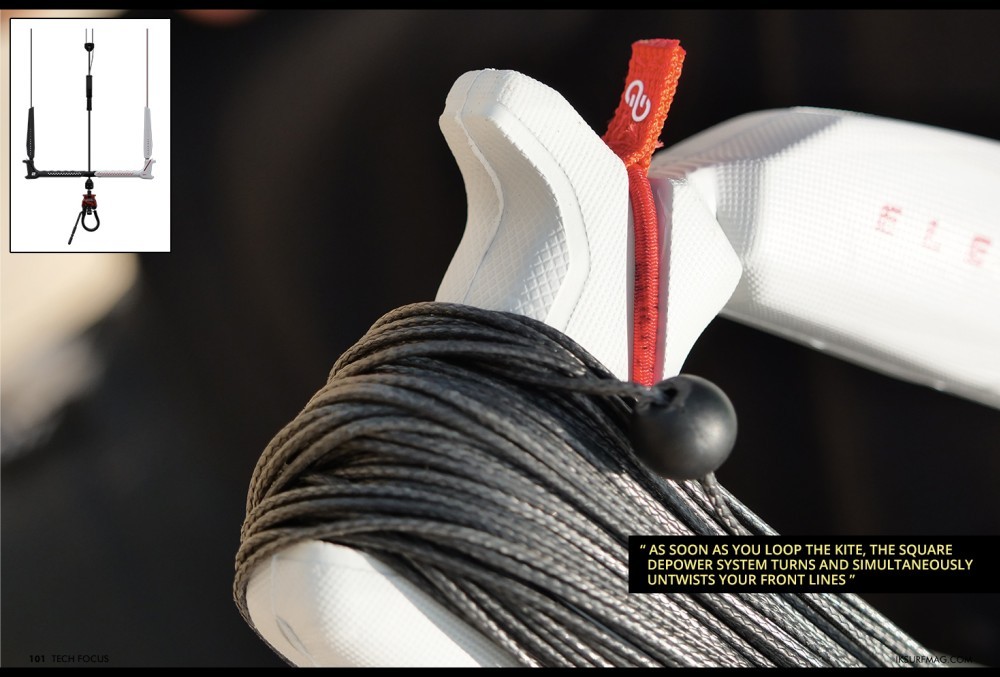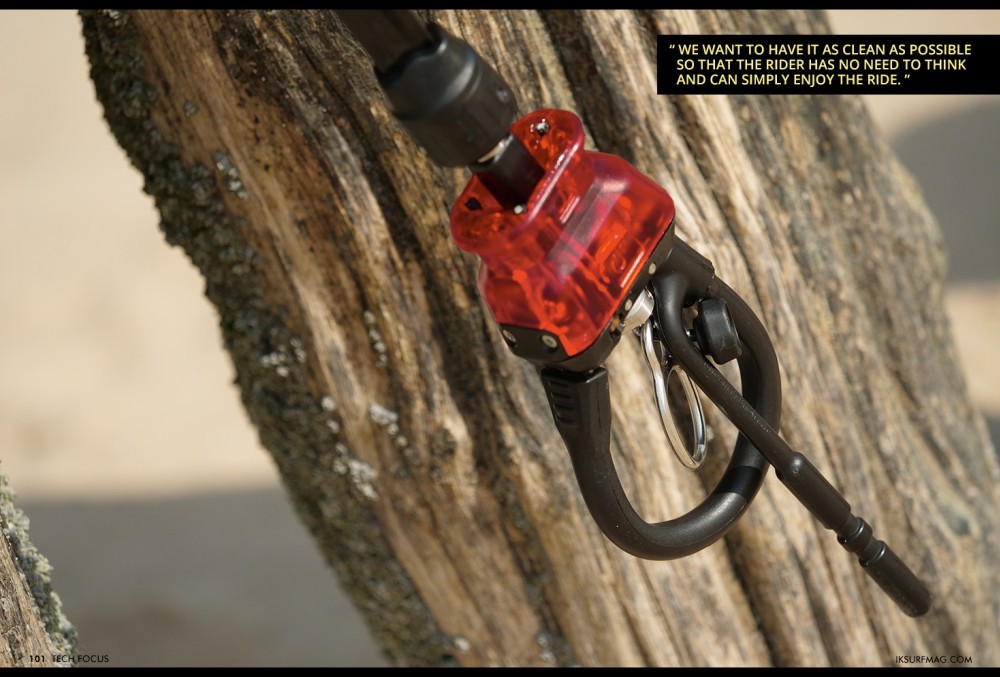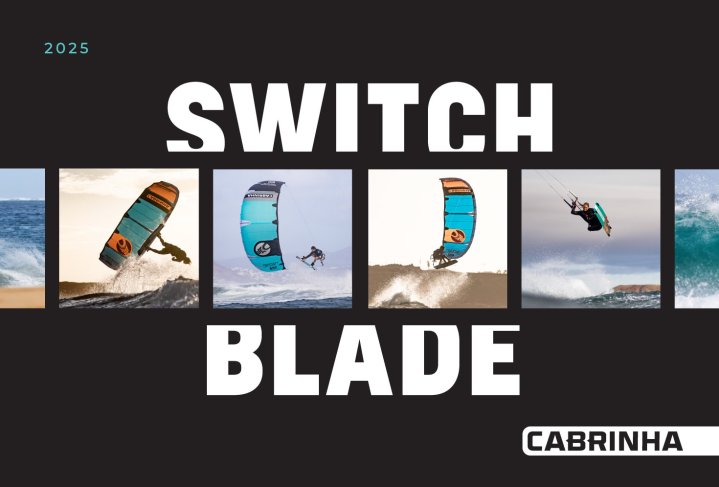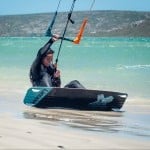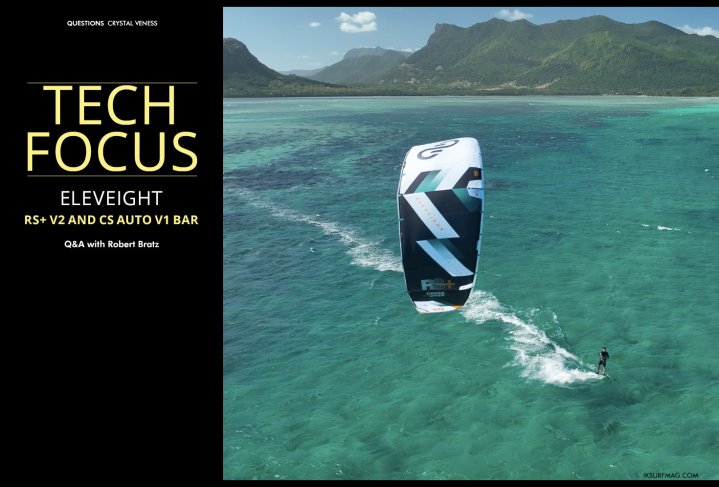
Tech Focus: Eleveight RS+ V2 and CS Auto V1 Bar
Issue 101 / Thu 12th Oct, 2023
Innovation and technology are at the front and centre of Eleveight's latest release, with a new update to their RS+ and an all-new control bar dropping! In this Q&A, we catch up with their design team to learn about these premium products!
Last year, the RS+ made a splash with premium materials and top performance in the hands of Arthur Guillebert and the Eleveight Pro team. What's new with the RS+ V2?
Absolutely, our team performed very well on the new RS+, and we worked closely with them to gain their valid feedback for the new development of version 2.
The RS+ V2 has many incremental changes with general improvements in the low end and very predictable handling. More specifically, we changed the following parameters to include a more conical leading edge with increased diameter in the centre and thinner tips. This relocates the twist further outwards and allows for a more precise turn that exactly follows the rider's input. The wingtip sweep has been further adjusted for a linear load input when turning. These two changes harmonise the turn characteristic throughout the wind range and contribute to the overall impressive predictability of the RS+.
The bridle geometry has also been adjusted to the new leading edge diameter and shape to reduce the bar pressure while maintaining direct feedback. The new deeper profile also allows for an easily accessible and better low end with a more stable kite position in the wind window.
Are there differences between the shape and design of the latest model in the RS range versus the RS+ range?
The core DNA of the RS+ V2 is similar to our RS V8. Both models are high-performance freeride kites with a three-strut frame construction. The main difference is in the inflatable structure. The RS+ uses Dynea Tex for the Leading edge and XT light for the struts. The different material composition also requires some shape differences to distribute the load more efficiently. As a result, the RS+ is much lighter, but more importantly, the flight characteristics are more dynamic with an ultra-direct feel.
The RS+ V2 uses the exclusive Dynea Tex material. What are the performance benefits of this material, and what made it the clear choice for the RS+?
Dynea Tex is a highly specialised fabric engineered without compromise. While 32 times stronger than traditional Dacron, it's also 30% lighter, stiffer and more precise than other standard materials used in inflatable kites.
Utilising the strength of Dyneema kite lines, we've taken the same Ultra PE Fibres and woven them into a lightweight fabric to give the optimum balance between responsiveness and long-term performance.
Dynea Tex's high structural stiffness has less deformation and, therefore, increased efficiency. The form stability under load has been enhanced by 80%, allowing the rider easier power development that's direct and responsive.
The beneficial character is also clearly shown in the weight reduction. Decreasing the weight extends the wind range, allowing you to get out in lighter wind and handle stronger gusts due to improved load-bearing capabilities.
Durability has always been a key component of Eleveight designs. What reinforcements have been included in this kite to help it withstand the elements?
For our whole Eleveight kite lineup, we use the same construction methods with quality and durability as key elements in our production process. Aside from our prime materials, X4 ripstop, Dynea Tex and XT Light, we pay special attention to our Double Bond Canopy, where every seam is glued and stitched for maximum durability. We also use a triple-reinforced closing seam along the leading edge to make it practically indestructible. The centre segments have stronger reinforcements as the material load is much higher compared to the smaller diameter of the wingtips.
Our Ultra-Light Load Diffuser provides angled reinforcements along the trailing edge to diffuse the load and strain on the canopy, making it more durable while improving kite stability and longevity. The 2 Step Force Transition helps with the load transition between the inflatable frame structure and the ripstop material, which is optimised for improved stability and durability. An extra layer of double ripstop also sits between the inflatable structure and the X4 ripstop to protect the load. Finally, we use additional leading-edge TPU reinforcements for further protection against wear and tear.
How does this kite balance lightweight materials with durable construction?
The advantages of most lighter materials are not only based on weight. In the case of Dynea Tex, we also have a significant improvement in structural stiffness, which leads to less deformation and a much higher recovery of the material under load. In other words, we could also say that the durability is much better, and Dynea Tex offers the optimum balance between responsiveness and long-term performance.
The base RS model is more progression/freeride focused, while the RS+ version is oriented towards performance freeride, freestyle, and big air. What is it about the construction and shape that lends to this change in performance?
Our RS is a performance freerider with a great versatile character. The RS+ V2 is like a top-performing racing car that's light, direct and powerful. To achieve this performance, the key element is in the stiffer frame structure and the use of Dynea Tex. But the secret is not only in the different materials but also in the adapted shape of the leading edge and the struts. A thinner profile makes the flying characteristic more agile, with very direct feedback and dynamic handling.
You've just released the new CS Auto Bar! The first thing we notice with this bar is the sleek depower system. Can you tell us more about this design and how it works?
Our focus in the development process was to create an intuitive performance control system. The CS Auto bar reflects our efforts by seamlessly blending simplicity with functionality, complete with intuitive controls and safety features.
The core feature is the auto swivel function, which untwists your front lines automatically, made possible by two key elements in the design. The square-shaped dual cavity tube houses both the depower and the safety lines, keeping them separated within the clean, unified system. As soon as you loop the kite, the square depower system turns and simultaneously untwists your front lines, meaning you no longer need to rotate the bar to untwist your backlines! We used a ceramic ball-bearing system in the swivel, so the rotation is friction-free, and the untwist is worry-free.
Let's discuss the lines, a hot topic amongst kiters looking for longevity and safety in their bars. What lines are used with the CS Auto Bar?
We make no compromise on the quality of the lines. We use the highest level thermo-coated Dyneema lines made in Germany. The SK99 lines have minimum stretch and withstand the highest break load between 350 and 400 kg.
The Quick-Matic II is a click-in quick-release system. What improvements does the V2 have over the previous V1?
Our innovative Quick-Matic II safety system features an updated inner body to make assembling even easier. The low release resistance allows you to ditch the kite even with high tension on the lines. To reassemble the system, simply click the chicken loop back into place and go!
Eleveight has two key principles: Safety by Simplicity and Performance by Design. What safety and performance benefits do the critical design features of the CS Auto Bar offer?
The bar is our cockpit, and we want to have it as clean as possible so that the rider has no need to think and can simply enjoy the ride. The auto untwist function has a huge performance benefit as the rider has seamless control without worrying about twisted lines and keeps your kite in the correct setup at all times.
Our ergonomic EVA grip also offers more comfort and grip that prevents fatigue in your hands and forearms. The high-quality SK99 lines are stretch-resistant, with a high break load and long-lasting performance.
On the safety side, we stick to the single front-line safety, as once released, the kite will automatically flag out on a single front line. The kite will gently fall from the sky, providing instant loss of power while protecting the construction. The Quick Matic II is a very intuitive system with a low release resistance. The reassembling is simple by clicking back in the chicken loop.
Videos
By Crystal Veness
Editor at IKSURFMAG, Crystal Veness hails from Canada but is based in South Africa. When she isn't busy kitesurfing or reporting on the latest industry news for the mag, she is kicking back somewhere at a windy kite beach or working on creative media projects.


